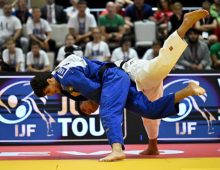These innovations may place first at this year’s Winter Olympics.
Virtual reality, the internet of ihings (IoT), and wearable technologies are everywhere –including the 2018 Super Bowl and Winter Olympics. Technology has made its way into the sports world — from fashion to coaching to media.
Here’s a look at some of the innovations and new tech debuting at this year’s Winter Games.
A cure for the cold
Instead of trying to solve big problems, sometimes focusing on the simple things can make you a winner. This year, Ralph Lauren designed self-heating jackets for the U.S. Ski Team, which will be cozy in temperatures that may drop to 10 degrees during the opening ceremonies. Equipped with an 11-hour battery and manufactured with “smart ink,” this heat-sensing garb is both stylish and practical. Warmth can be adjusted via cell phone. Unless you’re competing in Korea, however, you will need to shiver on the bunny slopes a while longer: The smart jackets aren’t available to consumers until the fall, according to USA Today.
All the data that’s fit to track
Tracking both individual and team performance is critical. Technology is making that easier. Devices from Polar, which makes sophisticated wearable monitors, have been used by many athletes competing in this year’s Winter Olympics. Coaches have access to the wearable trackers worn by multiple team members, get real-time (comparative) data, and send messages to individual athletes about adjustments they need to make in speed, sleep, and other keys to winning performance. Polar was the originator of the wireless heart rate monitor in 1982.
Samsung SmartSuits containing sensors will be worn by two Dutch speed skaters, whose coaches tracked their training speeds from their cell phones. (The technology can’t be used in competition to send messages, however.)
Simulation training
According to Mashable, the U.S. Ski and Snowboard Team used virtual reality to train, enabling them to repeat (and perfect) their runs on the same course — virtually impossible to do in reality. Typically the athletes only get to practice on the slope on which they’ll be racing a few days in advance. The team has been working for a couple of years with a Menlo Park, California-based VR company called Strivr. The headsets the athletes wear allow coaches to analyze their head movements and where they’re focusing as they head down a slope. Coaches can even introduce additional challenges such as difficult weather conditions so athletes get comfortable with the unexpected.













